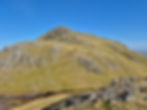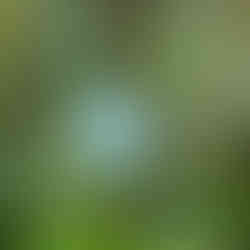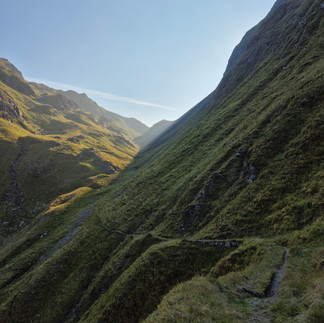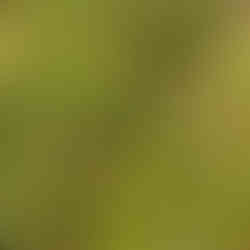
Quick ninja attack in Gleann Choinneachain....A' Ghlas-bheinn

Introduction - A' Ghlas-bheinn
A' Ghlas-bheinn can be climbed with Beinn Fhada, in fact, the munro book lists these mountains together. However; having climbed Beinn Fhada on a beautiful snowy winters day, that was enough, leaving A' Ghlas-bheinn alone and vulnerable to a quick ninja attack on another day. Having said that, this whipper-snapper of a munro should not be underestimated, the long undulating ridge to the summit is energy sapping and navigation into the glen on the descent, challenging.
The views from A' Ghlas-bheinn of Beinn Fhada are the finest. You really get why it's called Beinn Fhada, or the "long hill". It feels it when you're climbing it, and looks it from a distance.
Autumn was beginning to show its real beauty on this walk. The flora and fungi were impressive, the rowan leaves starting to colour and the berries lipstick red. The purple heather and partially decaying bracken provided an ancient MacDonald of Clanranald tartan backdrop in the glen (my family tartan), and the cold morning lay a heavy dew on spiders webs.
Stats and stuff - munros; maps & timings
Munro number: 43
Munro name(s): A' Ghlas-bheinn 918m (3011ft)
Area: Knoydart and Glen Affric
Maps: Knoydart, Kintail & Glen Affric Map; OS Map of Loch Alsh, Glen Shiel & Loch Hourn | Landranger 33 Map | Ordnance Survey Shop
Distance: 10 miles
Ascent: 1002m (3289ft)
Moving time: 4.5 hours
Total time: 6.5 hours
Ratings
Effort 😅😅😅
Navigation 🤔🤔🤔
Bogginess ☹️☹️☹️
Enjoyment 😍😍😍
Local information
Eating: The Cluanie Inn - A Hotel Near Isle of Skye; Speciality Chocolates | Chocolates of Glenshiel | Scotland; Kintail Lodge, Glenshiel Bridge, Kyle of Lochalsh Hotel
Accommodation: The Cluanie Inn - A Hotel Near Isle of Skye; Kintail Lodge, Glenshiel Bridge, Kyle of Lochalsh Hotel
Facilities: Inverinate Service Station - petrol and shop
The Cluanie Inn is run by the Black Sheep Hotels chain and has two sister hotels; "Whispering Pines" in Letterfinlay on Loch Lochy, and "Rokeby Manor" in Invergarry. The food is excellent.
The route

A perfect St Andrews cross welcomed me into Glen Choinneachain on a fine crisp morning. It was going to be a good day!
The walk starts just beyond the Kintail Outdoor Centre at the bridge over the River Croe. There is limited parking and no vehicular access after the bridge. I named the route up the glen the walk of 5 gates, there are a lot of gates, take care to close them after you as livestock are kept lower in the glen, and forests protected from deer in the upper glen.
The path up Glen Choinneachain is a through route to Glen Affric and part of the Affric Kintail way, a long distance walk from Drumnadrochit to Morvich.
The path is clear and easy going but very wet, in fact, it's mostly a stream for most of the walk up to the col at Bealach an Sgairne. In winter it can be a real challenge as the stream becomes an ice rink.

When beginning the walk, Beinn Fhada is actually hidden by the impressive Sgurr a Choire Gairibh. A' Ghlas-bheinn looks small in comparison but looks can be deceiving, it's a wee beastie!


The trek up the glen is uneventful until you reach the river crossing of the Allt Coire an Sgairne. The crossing can be problematic when the river is in spate, and the roaring of the waterfalls above you makes it feel a little intimidating, but with careful navigation and use of walking poles to ensure stability, it is easily achievable.
After the river crossing follow the path north and then west into Bealach an Sgairne.
There is a clear switchback in the path marked by a small cairn where the path to Beinn Fhada leaves. Follow the path to the left into an enchanting hidden glen towards Bealach an Sgairne.


If climbing A' Ghlas-bheinn from Beinn Fhada, you can descend the north face of Meall a Bhealaich (picture above). I would not suggest this as an option, especially in winter. The safer route is to reverse your route from Beinn Fhada to the junction in the path below Bealach an Sgairne and then climb onwards to A' Ghlas-Bheinn from there.

There is a very clear path along the undulating ridge to the summit of A' Ghlas-bheinn and the views down Glen Affric and south west to the Glen Shiel mountains are wonderful. The visibility was amazing and I could clearly see the Knoydart mountains and Ben Nevis.


Now then, the description of the route down suggested descending a "broad grassy ridge" and "aiming for the point where a path emerges from the forest". Two important points to note, there are four grassy ridges descending from the summit and the forest has changed somewhat since the description was written. With hindsight, I should have taken a bearing from the summit to where I could see a path and the edge of the forest. I would have done that in the mist, but sunshine and over confidence seemed to have affected my judgement. In the end I descended the wrong grassy ridge and ended up fighting my way through a thick forest on a steep slope with no signs of paths anywhere.

I knew if I just kept going down I would eventually reach the river, the Allt Mam an Tuirc, and the forestry track through Dorusduain Wood. Hot, sweaty and with a complete sense of humour failure, I found the river, and it was not an unsubstantial river! Thankfully, I'm not averse to wild swimming, so stripped to the waste I crossed the river. Refreshing it certainly was, warm is definitely wasn't. After clambering up the steep bank I emerged from the undergrowth straight onto the forestry track.
The track was a welcome relief for my tired legs and lead past the derelict house at Dorusduain to the bridge over the Abhainn Chonaig.

The current bridge was constructed for the National Trust by 590 EOD (Explosive Ordnance Disposal) Squadron in June 1991, and I was very grateful to them, two river crossings was enough for today.
Finally I descended through the five gates and made my way back to the car. A lesson learnt, things change, forests come and go, and compass bearings are not just for misty conditions.
Claire's top tip....
Know your berries!
As John Keats told us in his poem Ode to Autumn, it is the "season of mists and mellow fruitfulness". You can see this in the changing colours and ripening fruits all around us, but maybe would not expect it to be so obvious in the Scottish mountains. There are a number of berry species that grow at high altitude in Scotland. Thankfully none of the ones listed here are poisonous, but some can be acidic and not very tasty.
The tastiest by far is the blaeberry (bilberry) (Vaccinium myrtillus). Identifiable by it's matt black berry and large oval leaves. The blaeberry is deciduous and the leaves turn in the autumn. In the spring the flowers of the blaeberry provide a valuable food source for bees and insects. In the autumn the berries are foraged by birds, pine martins and deer, amongst others.
Blaeberries can often be found growing amongst mountain crowberries (Empetrum nigrum). Theses berries are black and shiny and the leaves are evergreen and heather-like. The colour of the berries is where the similarity ends, as the crowberry whilst edible, has little taste.
Another tasty berry is the cowberry (Vaccinium vitis-idaea). A dwarf evergreen shrub which looks a little like a leathery-leaved blaeberry. The flowers are white or pink and are bell-shaped. The fruit is a red berry, which can put some people off, but the berries are nevertheless edible. The cowberry is closely related to the cranberry, and one of its common names is the 'mountain cranberry'.
Rowan trees (Sorbus aucuparia) are know as "mountain ash" and grow on crags and rocky ground, often in cracks in boulders. Within Scottish folklore, they were believed to possess mystical powers. It was customary to plant Rowan trees near homes and livestock to ward off witches and for protection. Even today, remnants of these superstitions linger in rural communities, where the Rowan tree continues to be revered as a symbol of good fortune. The berries are not great to eat raw, but made into jelly and served with venison the rowan gives one of the best flavours that you can gather from the hills.
Finally, a prostrate dwarf juniper can be found growing in the high mountains. Interestingly, the juniper berry is not a berry at all - it is a cone! Once abundant, 79% of the plants are now too old to old to produce a sufficient number of berries for large scale harvest, and juniper is considered to be one of the rarest plants in the UK according to the Woodland Trust. The Scottish juniper (Juniperus communis ssp. nana) is restricted to the west and the north highlands. The berries are not very palatable; however, it is a winter favourite of black grouse, and birds like fieldfare and ring ousel. Deer and rabbits will graze juniper when other more favourable food is unavailable. For us humans, they are considered too bitter to eat raw although they will do no more harm than an upset stomach and can produce a wonderful jelly to accompany game, and dried can be used as a pepper alternative.
As always, if you are unsure, don't forage.
Coming next......
Sgurr Breac & A' Chailleach
Thank you for reading ❤️ xx








































This is brilliant. Really enjoyed it - the photos are amazing and I loved all the information and the bits about the flora and berries etc. Love your blogs. I get to the tops of mountains from my armchair! x
Brilliant blog Claire! Really enjoying reading about your adventures and seeing your fantastic photos 🤩❤️
Fab account as ever x